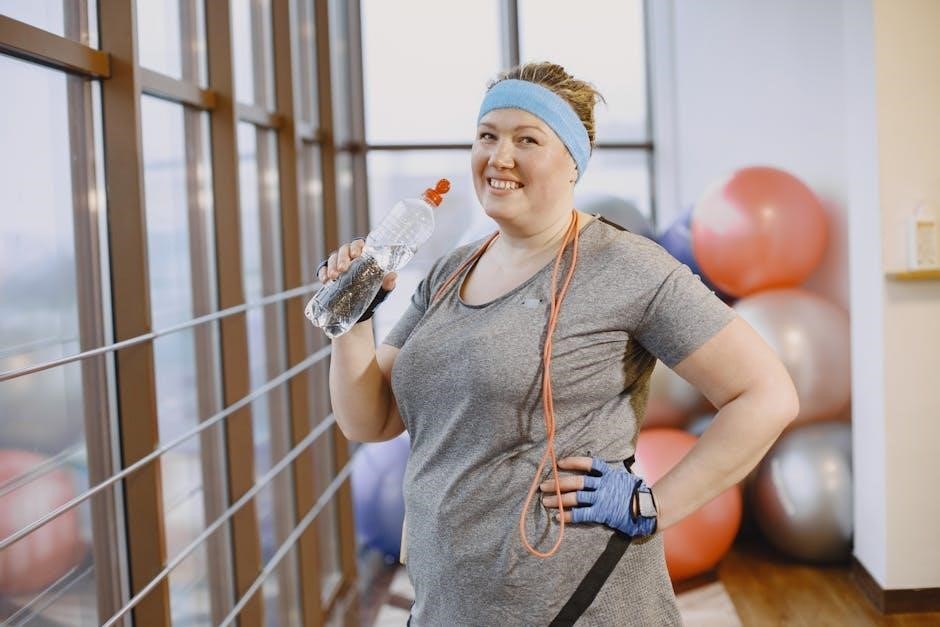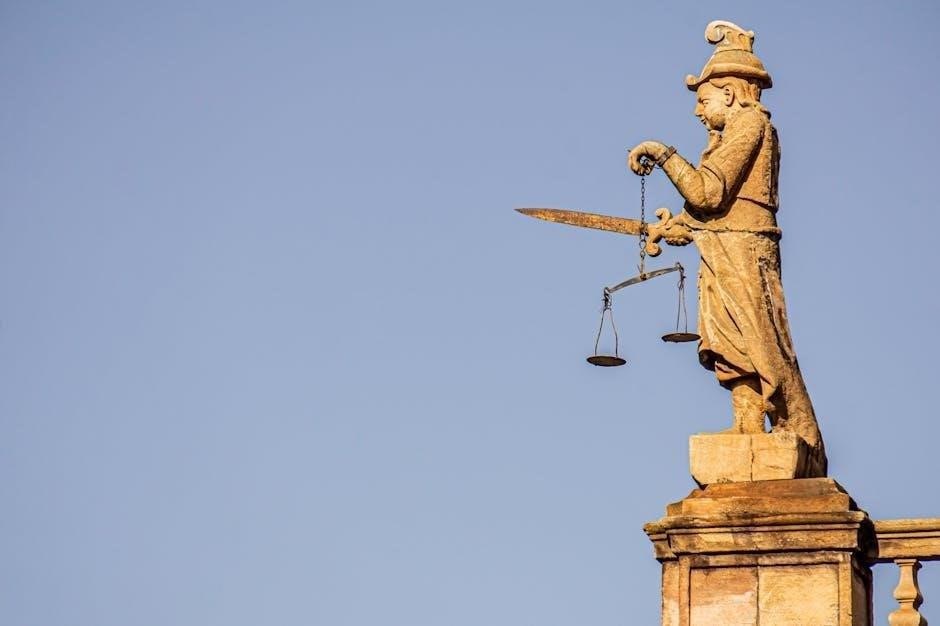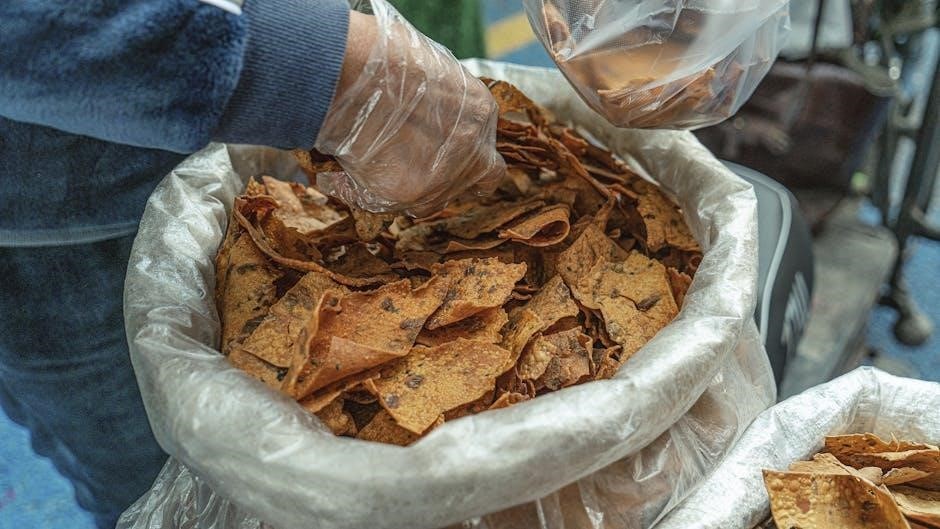How to Measure Your Hand for Gloves

To measure your hand‚ wrap a tape measure around your dominant hand at its widest point‚ just below the knuckles‚ excluding the thumb. Ensure the hand is flat and the measurement is snug but not tight. This will give you the accurate circumference needed to determine your glove size.

1.1. Step-by-Step Guide to Measuring Hand Circumference
Gather a flexible tape measure or a piece of string and a ruler.
Hold your dominant hand flat with fingers together and thumb excluded.
Wrap the tape measure around the widest part of your palm‚ just below the knuckles.
Ensure the tape is snug but not overly tight; your hand should remain relaxed.
Record the measurement in inches or centimeters.
Compare the result to the glove size chart to find your ideal fit.
This method ensures an accurate reading for selecting the right glove size. Always measure multiple times for consistency.
1.2. Importance of Using Your Dominant Hand
Using your dominant hand for measuring glove size is crucial for accuracy. Your dominant hand tends to be slightly larger due to regular use and muscle development.
Measuring the dominant hand ensures the gloves will fit comfortably during activities‚ preventing tightness or looseness.
This approach guarantees that the gloves will accommodate the natural shape and size of your most used hand‚ providing optimal comfort and functionality.
Ignoring this step may lead to ill-fitting gloves‚ which can hinder performance or cause discomfort. Always prioritize your dominant hand for precise measurements.
This ensures the best fit and functionality for your gloves‚ whether for sports‚ work‚ or formal events.

Understanding Glove Size Charts

Glove size charts are standardized guides that help match your hand measurements to specific glove sizes‚ ensuring a proper fit for various activities and preferences.
2.1. Standard Glove Size Chart for Men
A standard glove size chart for men typically ranges from size 7 to 12‚ corresponding to hand circumferences of 7 to 12 inches. To determine your size‚ measure the circumference of your dominant hand at its widest point‚ just below the knuckles‚ excluding the thumb. For example‚ a 9-inch circumference usually corresponds to a medium size. The chart often includes measurements in inches or centimeters‚ providing a clear guide to match your hand size to the appropriate glove size. This ensures a comfortable and functional fit‚ whether for sports‚ work‚ or formal wear. Always refer to the specific chart provided by the manufacturer‚ as sizes can vary slightly between brands.
2.2. Standard Glove Size Chart for Women
The standard glove size chart for women typically ranges from size 6 to 8.5‚ corresponding to hand circumferences of 6 to 9 inches. To determine your size‚ measure the circumference of your dominant hand at its widest point‚ just below the knuckles‚ excluding the thumb. For example‚ a 7-inch circumference generally corresponds to a size 7. The chart often includes measurements in inches or centimeters‚ providing a clear guide to match your hand size to the appropriate glove size. This ensures a comfortable and functional fit‚ whether for sports‚ work‚ or formal wear. Always refer to the specific chart provided by the manufacturer‚ as sizes can vary slightly between brands.

Factors Affecting Glove Fit
Finger length‚ palm width‚ and hand circumference significantly impact glove fit. Proper measurement ensures comfort and functionality‚ avoiding overly tight or loose gloves for optimal performance.
3.1. Impact of Finger Length on Glove Size
Finger length plays a crucial role in determining glove size‚ as it ensures proper fit and comfort. Measure from the tip of your longest finger to the base of your palm to assess finger length accurately. Gloves that are too short may restrict movement‚ while overly long fingers in a glove can cause discomfort. Some individuals may find their finger length requires a different size than their palm circumference‚ especially if their hands are disproportionately long or short. Ensuring the right balance between finger length and palm width is essential for optimal fit and functionality. Accurate measurement helps prevent ill-fitting gloves that may hinder dexterity or cause discomfort during use.
3.2. Role of Palm Width in Determining Fit
Palm width is a critical factor in achieving a comfortable and functional glove fit. Measure the widest part of your palm‚ just below the knuckles‚ excluding the thumb‚ to determine your size. A proper fit ensures your gloves aren’t too tight or too loose‚ allowing for optimal dexterity and comfort. If your palm width is larger than average‚ you may need a larger size to accommodate it‚ while a narrower palm might require a smaller size. Incorrect sizing can lead to restricted movement or discomfort. Accurate measurement of palm width ensures the gloves fit well and meet your needs‚ whether for sports‚ work‚ or formal occasions. This step is essential for selecting gloves that provide both comfort and functionality.
Choosing the Right Glove Size for Different Activities
Glove size varies by activity‚ requiring specific fits for optimal performance. Measure your hand to ensure a snug‚ comfortable fit tailored to your activity‚ whether sports‚ outdoor‚ or formal events.
4.1. Glove Sizing for Sports and Outdoor Activities
Proper glove sizing is crucial for sports and outdoor activities to ensure comfort‚ dexterity‚ and performance. Measure your dominant hand’s circumference just below the knuckles‚ excluding the thumb‚ to determine your size. For sports like cycling or hiking‚ a snug fit is essential to prevent excessive movement‚ which can cause discomfort or blisters. If the gloves are too loose‚ they may not provide adequate grip or control. Conversely‚ gloves that are too tight can restrict movement and blood flow. Always consider the activity’s demands and the glove’s material when selecting your size. Different sports may require varying fits‚ so refer to specific size charts for accuracy and optimal performance.

4.2. Glove Sizing for Dress and Formal Wear
For dress and formal wear‚ glove sizing requires precision to ensure a comfortable yet elegant fit. Measure your dominant hand’s circumference just below the knuckles‚ excluding the thumb‚ to determine your size. Formal gloves‚ such as those for weddings or business attire‚ should fit snugly but not restrict movement. A proper fit ensures the gloves stay in place without bunching or slipping. When choosing sizes‚ consider the material; leather gloves may stretch slightly‚ while synthetic materials hold their shape. Ensure the gloves allow freedom of movement for activities like shaking hands or holding items. A well-fitted glove enhances both comfort and style‚ making it essential to select the correct size for formal occasions;
Common Mistakes When Measuring Glove Size

Common errors include forgetting to exclude the thumb‚ measuring too loosely or tightly‚ and using the non-dominant hand‚ leading to an inaccurate glove size;
5.1. Forgetting to Exclude the Thumb

One of the most common mistakes when measuring glove size is failing to exclude the thumb. Including the thumb in the measurement can lead to a larger circumference reading‚ resulting in a glove that is too big. This oversight can cause the gloves to feel loose and uncomfortable‚ especially during activities requiring precision. To avoid this error‚ ensure the tape measure is wrapped around the palm at its widest point‚ just below the knuckles‚ while keeping the thumb outside the measurement area. This method provides an accurate fit without unnecessary bulk. Always double-check your technique to ensure the thumb is not included in the measurement‚ as this small detail significantly impacts the overall fit and comfort of the gloves.
5.2. Measuring Too Tightly or Too Loosely
Measuring your hand either too tightly or too loosely is a common mistake that can significantly affect the fit of your gloves. If the tape measure is wrapped too tightly‚ it can compress the skin‚ leading to a smaller measurement and gloves that feel restrictive. On the other hand‚ if the tape measure is too loose‚ the gloves may end up being too large‚ which can compromise grip and dexterity. To ensure an accurate measurement‚ the tape measure should be wrapped snugly around the palm at its widest point‚ just below the knuckles‚ without applying excessive pressure. This balance ensures a comfortable fit that allows for natural hand movement while maintaining the necessary grip and functionality. Always aim for a middle ground to avoid discomfort and poor performance.
